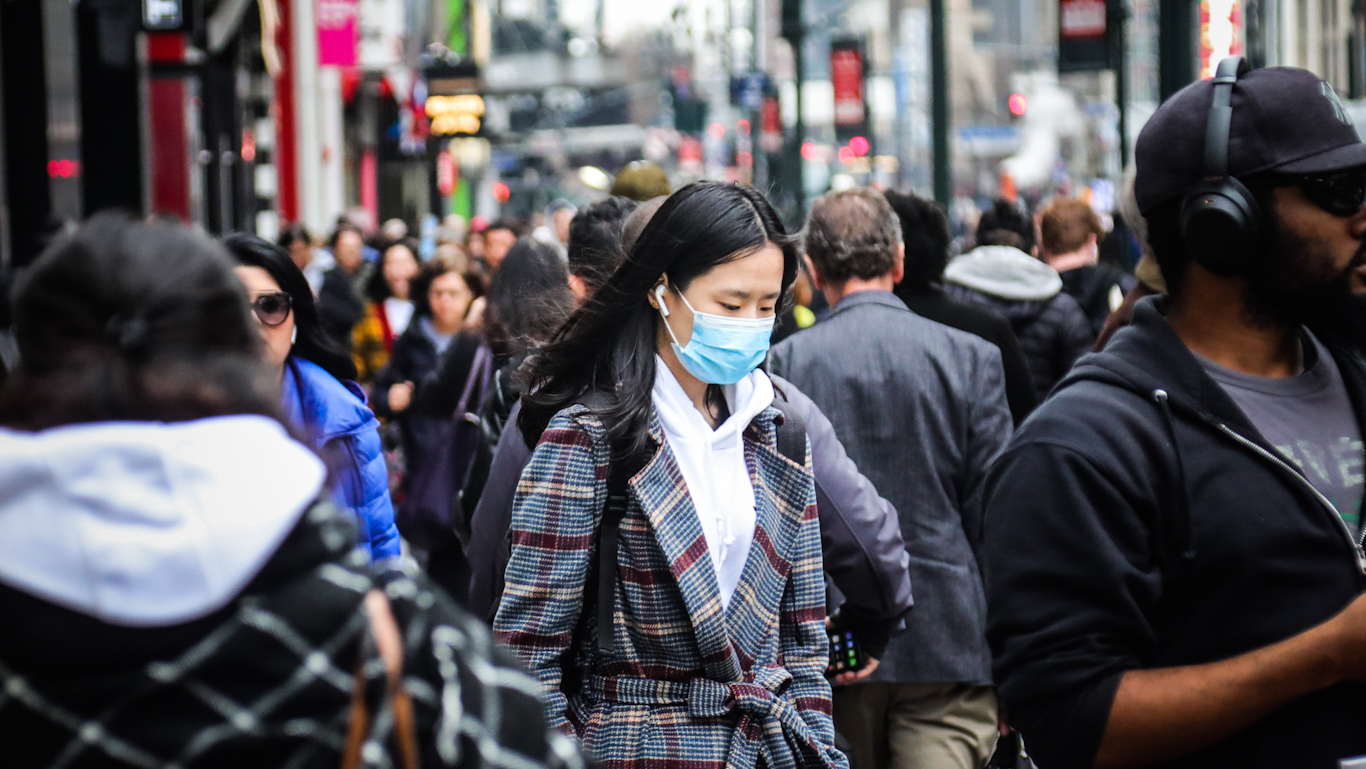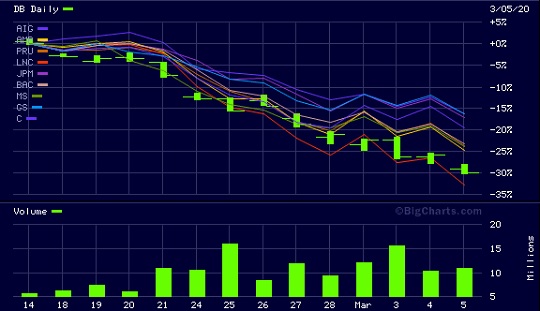________
Source: MPN
As Naomi Klein laid out in her bestseller "Shock Doctrine," the wealthy elite use the confusion caused by economic and other disasters to quickly force through pro-free-market legislation.
By Alan Macleod | March 6, 2020
As coronavirus panic hits the U.S., a financial lobbying group is attempting to use the crisis to push through the deregulation of its industry. The Bank Policy Institute (BPI), a Washington-based lobbying organization representing many of the nation’s largest banks, released a set of proposals this week, the most important of which recommends that the Federal Reserve lower capital requirements to zero. This would mean banks could lend an unlimited amount without having any assets or wealth to back it up. It also advocated relaxing the so-called “stress tests” that force banks to show that they can withstand economic shocks. This, it claims, would help America fight the COVID-19 virus. The report’s lead author was BPI CEO Greg Baer, former Managing Director of JP Morgan Chase.
The recommendations have been condemned as incoherent and "transparently opportunistic" by Jeremy Krass of the University of Michigan School of Business. "The whole idea of capital requirements and stress-testing banks is to make sure they have enough cushion to absorb losses" in a period of economic crisis, Kress told the Washington Post. Now that the economy has gone into a sudden shock, Wall Street wants those regulations lifted.
The government itself is also trying to force through measures that it dubiously claims would help fight the coronavirus. Earlier this week President Trump called on Congress to enact a large tax cut and pushed Democrats to support it.
These efforts perfectly encapsulate the idea of the "Shock Doctrine" that author Naomi Klein laid out in her 2007 book of the same name. Klein argued that the wealthy elite use the confusion caused by economic and other disasters to quickly force through pro-free-market legislation that would otherwise meet with widespread and coordinated opposition. As she said, "the idea of exploiting crisis and disaster has been the modus operandi of [economist] Milton Friedman's movement from the very beginning – this fundamentalist form of capitalism has always needed disasters to advance."
"Some of the most infamous human rights violations of this era, which have tended to be viewed as sadistic acts carried out by antidemocratic regimes, were in fact either committed with the deliberate intent of terrorizing the public or actively harnessed to prepare the ground for the introduction of radical free-market 'reforms,'" she explained.
Klein cites Hurricane Katrina – where the Bush administration rushed through privatization and charter school bills for New Orleans while residents were reeling from the devastation – as a perfect example. Going further back, Chilean dictator Augusto Pinochet used his coup against President Salvador Allende to turn Chile into a free-market, neoliberal experiment almost overnight, over the protestations of ordinary Chileans, whom he suppressed with overwhelming force.
The stock market is in serious decline amid fears that the coronavirus will disrupt international supply chains; the Dow Jones index plummeted nearly 1,000 points yesterday. Yet, as the Center for Economic Policy Research's Dean Baker has noted, the stock market is a very poor indicator of the economy's current and future health. It is, however, a great gauge on how the top one percent are faring. Stocks also tend to surge after natural disasters (like the 2004 Indian Ocean tsunami) or when conservatives win elections (in December, British banks and weapons manufacturers' share prices jumped after Boris Johnson beat Jeremy Corbyn). This is because corporations, ignoring the devastation, expect big orders to rebuild or to destroy.There are many things to worry about with the corinavirus, but a plunging stock market is not one of them, unless you are one of the minority who owns a large amount of stock https://t.co/lxZC10PxgD— Dean Baker (@DeanBaker13) March 6, 2020
Please go to MPN to read the entire article.
________
Source: Wall Street on Parade
Two Charts Explain Why Wall Street Banks Are Under So Much Selling Pressure
Deutsche Bank Trading Chart from February 14 through March 5 Versus AIG, Ameriprise Financial (AMP), Prudential Financial (PRU), Lincoln National (LNC), JPMorgan Chase (JPM), Bank of America (BAC), Morgan Stanley (MS), Goldman Sachs (GS) and Citigroup (C).
By Pam Martens and Russ Martens: March 6, 2020 ~
Yesterday, the Dow Jones Industrial Average of 30 large cap companies closed with a loss of 969.5 points or 3.58 percent. That was bad enough but the losses among the biggest Wall Street banks outpaced the Dow losses by a significant margin. Typically, JPMorgan Chase is one of the better performers among the Wall Street banks in the midst of a big selloff. But not yesterday. It closed with a loss of 4.91 percent – a loss larger than Goldman Sachs (- 4.77 percent), which has a large criminal fine hanging over its head. The news that Jamie Dimon, Chairman and CEO of JPMorgan Chase, had heart surgery on Thursday was not reported until after the stock market had closed.
The losses among the other mega banks on Wall Street yesterday were equally unsettling. Morgan Stanley lost 5.86 percent; Citigroup closed down 5.79 percent, while Bank of America shed 5.07 percent.
All of these banks have one thing in common: they each are exposed to tens of trillions of dollars in derivatives. And according to a 2016 report from the International Monetary Fund (IMF), the German mega bank, Deutsche Bank, is heavily interconnected via derivatives to each of these Wall Street banks. (See chart below.) Deutsche Bank's stock lost 5.49 percent yesterday, bringing its losses to 30 percent in just the past 15 trading sessions. That's common equity capital that Deutsche Bank can't afford to lose: its shares have lost 75 percent of their common equity value in the past five years. The IMF concluded that Deutsche Bank posed a greater threat to global financial stability than any other bank as a result of these interconnections – and that was when its market capitalization was tens of billions of dollars larger than it is today.
On July 21, 2011, when the Government Accountability Office (GAO) released its audit of the Federal Reserve's secret $16.1 trillion in bank bailout loans during the financial crisis, the bank that ranked number 9 on the list for the largest amount of loans wasn't even a U.S. bank – it was Deutsche Bank. The Fed had funneled a cumulative $354 billion in revolving loans to Deutsche Bank. Two other foreign banks had received even more in Fed loans than Deutsche Bank: the U.K. bank, Barclays, had received $868 billion while the Royal Bank of Scotland Group PLC, also of the U.K., had received $541 billion from the Fed.
This inexplicable largesse from the Fed to foreign banks (while millions of American homeowners did not get a bailout and lost their homes to foreclosure) came into sharper perspective when the Financial Crisis Inquiry Commission released this chart. The chart shows Goldman Sachs' derivative counterparties as of June 2008 and the dollar amount of that exposure. Between Deutsche Bank, Barclays, and the Royal Bank of Scotland, Goldman had a cumulative derivatives' exposure to just those three foreign banks of $7.2 trillion notional (face amount).
Factor in the derivatives exposure at that time to these foreign banks by Citigroup, JPMorgan Chase, Morgan Stanley, Merrill Lynch and one can begin to understand why the Federal Reserve wanted to keep its $16.1 trillion in revolving loans to both domestic and foreign banks a big secret from the American people. (The GAO audit of the Fed only came about as a result of Senator Bernie Sanders attaching an amendment to the Dodd-Frank financial reform legislation in 2010.)
To help convince the public that the Wall Street banks were safe and sound again after the financial crisis of 2008 (despite the fact that they continued to have these astronomical sums of derivative exposure), the Fed began to make a big show out of its annual stress tests of the mega banks. But in 2016, when researchers at the Office of Financial Research looked at how the Fed was conducting these stress tests, they concluded that the Fed was not drilling down to the critically important data.
Please go to Wall Street on Parade to read the entire article.
________
Related:
Kindergarten debts
Bonds Hit Historic Lows, Prompting Fed to Ponder: What More Can We Do?
Schizophrenic bond market and prices:
Global bond-markets are setting records. Here's where they stand
The Fed Sent The Bond And Stock Market Into A Massive State Of Flux
What a time to have heart surgery. But that's alright, Jamie will be just fine especially with an income of $31.5 million for 2019. Don't want to die of heart failure before some of that money can be enjoyed.
JPMorgan chief executive Jamie Dimon has emergency heart surgery


No comments:
Post a Comment
Note: Only a member of this blog may post a comment.